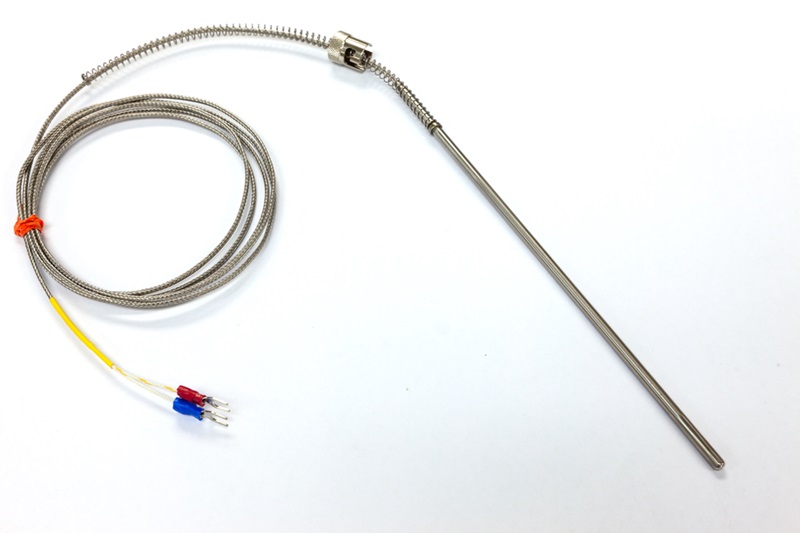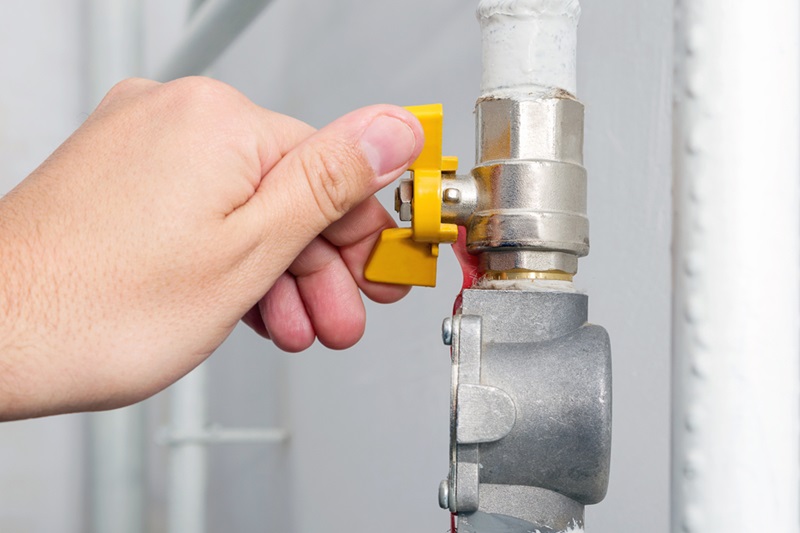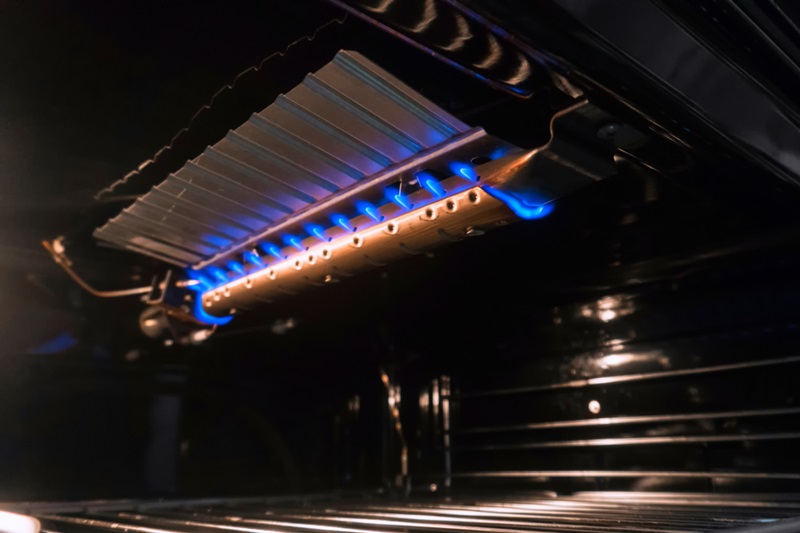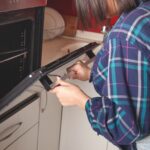If your gas oven won’t stay lit when the dial is released, you’ll want to fix the issue fast. This frustrating scenario not only disrupts your cooking routine but can also be a safety concern.
Understanding the underlying causes and finding effective solutions is crucial for the continued operation of your appliance.
Here, we explore the reasons your gas oven might struggle to stay lit. From examining components like the thermocouple and burners to considering factors such as gas supply and ventilation, all the answers are on this page.
So, join us as we navigate the troubleshooting process and offer step-by-step solutions to bring the warmth back to your kitchen.
Why Does the Gas Oven Flame Keep Going Out?
There are several potential reasons why your gas oven won’t stay lit, ranging from issues with the ignitor to problems with the pilot light, thermostat, or gas supply. Here is a closer look at some common reasons for a gas oven flame going out:
Cause 1: Pilot light adjustment
The pilot light is a small, continuously burning flame that ignites the main burner when turning on a gas oven.
If the pilot light is weak, flickering, or unstable, it can lead to issues with the main burner ignition and cause your gas oven to go out.
The most common problem with the pilot light is that the assembly is dirty or clogged. However, the pilot light should also have a specific size and shape for optimal operation.
If it’s too small or too large, it may not provide sufficient heat to keep the flame burning.
Solution for pilot light problems
Pilot light issues can usually be solved with cleaning and adjustment of the flame size:
- Before you start, turn off the gas supply to the oven.
- Clean the pilot assembly with a soft brush to remove any dirt or debris.
- Adjust the pilot light size according to the instruction manual for your oven.
- Ensure that the pilot flame is stable, with a consistent size and shape.
If the pilot light continues to be problematic, consult the oven manual for further guidance or seek professional assistance.
Cause 2: Thermocouple issues

The thermocouple is a safety device that senses the pilot flame inside gas ovens. It generates a small electric current when heated by the pilot flame, and this current keeps the gas valve open.
If the pilot light goes out, the thermocouple cools down and stops the current, causing the gas valve to close as a safety measure.
If the thermocouple cannot sense the pilot flame, it will immediately turn your gas oven off. There are two main issues related to thermocouple issues inside your gas oven that can cause this issue:
- Dirty or contaminated thermocouple: The thermocouple can accumulate dirt, soot, or other contaminants with continued oven use. This buildup can insulate the thermocouple from the heat of the pilot flame, causing it to malfunction.
- Misalignment or poor connection: If the thermocouple is not aligned correctly in the flame or if there is a poor connection, it may not generate enough heat to keep the gas valve open. Your gas oven therefore won’t stay lit.
Solutions for thermocouple issues
Thermocouple issues can usually be resolved with cleaning. Carefully clean the thermocouple with a soft brush to remove any dirt or soot. Also, ensure that the thermocouple is properly positioned in the flame so that it keeps your gas oven lit.
When cleaning the thermocouple, you’ll also want to check for any visible signs of damage or wear. If damaged, it may need to be replaced to function properly.
Cause 3: Dirty or clogged gas burners
Burners inside your oven distribute gas and provide the platform for combustion. The flame from the burner heats the thermocouple or igniter to ensure continuous operation.
Like the pilot assembly, burners can accumulate dirt, grease, and debris over time. This can cause the small openings or ports in the burner through which gas is released to become blocked, affecting the air-to-fuel ratio. The result is an uneven flame or flame outage.
Solutions for dirty or clogged burners
Issues caused by dirty or clogged gas burners can also be resolved with cleaning. Turn off the gas supply to the oven and remove the burners according to the oven instruction manual.
Clean the burners with a soft brush and a toothpick to clear any debris from the ports.
Once cleaned and free from debris, reattach the burners and try turning your gas oven on. If the problem has been resolved, the oven should stay lit.
Cause 4: Gas supply or valve issues

For your gas oven to turn on and stay lit, it must be connected to a gas supply. Without gas to keep the flame burning, it will instantly go out or might not light at all.
The gas flow to the oven burners is controlled by the gas valve. This valve opens to allow gas to flow when the oven is turned on and closes when the oven is turned off.
Issues with the gas valve can therefore obstruct gas flow, which is usually caused by one of these problems:
- Sticking valve: The gas valve may become sticky or obstructed with grease and debris, preventing it from properly opening or closing. This can lead to issues with the consistent gas supply to the burners.
- Wear and tear: Over time, the internal components of the gas valve can experience wear and tear, affecting its functionality. For example, if your oven has an electronic ignition system, a solenoid within the valve might be faulty, preventing it from opening.
Alternatively, there might be a problem with the overall gas supply to your home. If this is the case, you’ll also be experiencing issues with other gas appliances in your home.
Solutions for gas supply issues
Confirm that other gas appliances in your home (such as the stove or water heater) are operating as expected.
If not, there may be an issue with the overall gas supply to your home rather than an issue with your gas oven. Contact your energy supplier and discuss the problem with them.
If other appliances are working fine, there is likely an issue with the gas valve. Contact a qualified technician or the oven manufacturer’s customer support for assistance.
Technicians can perform tests on the gas valve to determine if it is functioning correctly or if it needs replacement.
Cause 5: Ventilation issues
Proper ventilation is crucial for the combustion process in gas appliances such as your oven, as oxygen is required for combustion.
Inadequate ventilation can affect the air-to-fuel ratio, potentially causing the flame inside the oven to go out.
Two main problems can result in improper ventilation. Firstly, the vents or openings around your oven may be blocked by obstructions.
Alternatively, if your gas oven is equipped with a ventilation system, such as an exhaust fan, malfunction in the system can affect combustion.
Solutions for ventilation problems
You can improve the ventilation in your oven to promote good combustion by:
- Checking for any obstructions around the oven vents or openings. Clear away any debris or items that may be blocking proper airflow.
- If your oven has an exhaust fan or ventilation system, make sure it is operational. Clean or replace filters as recommended by the manufacturer.
- Ensuring that the kitchen area is adequately ventilated. Good overall ventilation helps maintain the proper air-to-fuel ratio for combustion.
Cause 6: Thermostat or temperature sensor problems

The thermostat in your oven regulates the temperature by controlling the amount of gas that flows to the burners.
If the thermostat is not functioning correctly, it may not maintain a consistent temperature, leading to issues with the flame.
Possible thermostat problems include:
- Faulty sensor: The temperature sensor in your gas oven measures the internal temperature and communicates with the thermostat, allowing it to make the necessary adjustments. If the sensor is broken, it cannot read the temperature correctly.
- Calibration issues: The thermostat must be calibrated to accurately measure and feedback the internal oven temperature to make necessary heat adjustments. If not calibrated, it may cause your oven not to stay lit.
Solutions for thermostat problems
If you suspect that the thermostat in your oven isn’t working, it’s a good idea to test the accuracy of your oven temperature.
You can do this by preheating your gas oven and using an oven thermometer to compare the actual temperature to the desired temperature.
If there’s a significant discrepancy, the thermostat may need recalibration. Consult your oven manual for instructions on calibrating the thermostat or adjusting the temperature settings.
If the thermostat or temperature sensor appears faulty, it may require professional inspection and replacement.
Cause 7: Gas oven igniter issues
In ovens with electronic ignition systems, an igniter is responsible for lighting the gas when the oven is turned on. If the igniter is faulty, it may not produce the necessary spark to ignite the gas.
This might result from general wear and tear, affecting its ability to generate a spark. In some cases, igniter issues may be related to a malfunctioning control board, which controls the electronic components of the oven.
Solutions for igniter issues
If your gas oven has an issue with the ignitor, you can solve it by following these steps:
- Turn off the gas supply to the oven.
- Inspect the igniter for any visible signs of damage, such as cracks or breaks.
- If damaged, replace the igniter with an appropriate model for your gas oven.
- If there are no signs of damage, ensure the igniter is positioned near the burner.
- If the igniter appears functional but the oven still doesn’t ignite, there may be an issue with the control board, and professional assistance may be necessary.
Remember, although gas ovens last around fifteen years with proper care, even the most well-maintained ovens don’t last forever!
If your gas oven won’t stay lit or you’re dealing with other oven issues, it might be time to buy a new oven.

Hannah is a freelance content writer and self-proclaimed foodie. When Hannah isn’t sitting tapping at her laptop, you’ll probably find her in the kitchen. As an ex-chalet host, she’s used to cooking four-course meals for 10+ people and loves feeding friends and family whenever possible.







